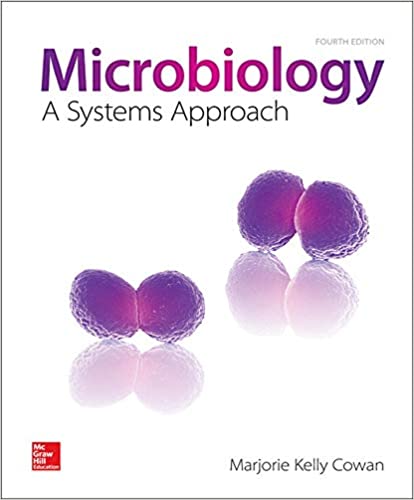
Microbiology: A Systems Approach 4th Edition by Marjorie Kelly Cowan
Edition 4ISBN: 978-0073402437
Microbiology: A Systems Approach 4th Edition by Marjorie Kelly Cowan
Edition 4ISBN: 978-0073402437 Exercise 21
From this chapter, process figure 15.17. In this figure describing primary and secondary responses to antigen, indicate where a vaccination may be most effective, and also indicate where natural infection would play a role.
Figure 15.17: Primary and secondary responses to antigens.
Upon the first exposure to an antigen, the system undergoes a primary response. The earliest part of this response, the latent period , is marked by a lack of antibodies for that antigen, but much activity is occurring. During this time, the antigen is being concentrated in lymphoid tissue and is being processed by the correct clones of B lymphocytes. As plasma cells synthesize antibodies, the serum titer increases to a certain plateau and then tapers off to a low level over a few weeks or months. Early in the primary response, most of the antibodies are the IgM type, which is the first class to be secreted by plasma cells. Later, the class of the antibodies (but not their specificity) is switched to IgG or some other class (IgA or IgE).
After the initial response, there is no activity, but memory cells of the samespecificity are seeded throughout the lymphatic system.
When the immune system is exposed again to the same secondary response occurs. The rate of antibody synthesis, the peak titer, and the length of antibody persistence are greatly increased over the primary response. The speed and intensity seen in this response are attributable to the memory B cells that were formed during the primary response. The secondary response is also called the anamnestic response. The advantage of this response is evident: It provides a quick and potent strike against subsequent exposures to infectious agents.

Figure 15.17: Primary and secondary responses to antigens.
Upon the first exposure to an antigen, the system undergoes a primary response. The earliest part of this response, the latent period , is marked by a lack of antibodies for that antigen, but much activity is occurring. During this time, the antigen is being concentrated in lymphoid tissue and is being processed by the correct clones of B lymphocytes. As plasma cells synthesize antibodies, the serum titer increases to a certain plateau and then tapers off to a low level over a few weeks or months. Early in the primary response, most of the antibodies are the IgM type, which is the first class to be secreted by plasma cells. Later, the class of the antibodies (but not their specificity) is switched to IgG or some other class (IgA or IgE).
After the initial response, there is no activity, but memory cells of the samespecificity are seeded throughout the lymphatic system.
When the immune system is exposed again to the same secondary response occurs. The rate of antibody synthesis, the peak titer, and the length of antibody persistence are greatly increased over the primary response. The speed and intensity seen in this response are attributable to the memory B cells that were formed during the primary response. The secondary response is also called the anamnestic response. The advantage of this response is evident: It provides a quick and potent strike against subsequent exposures to infectious agents.

Explanation
For a vaccination to work at maximum eff...
Microbiology: A Systems Approach 4th Edition by Marjorie Kelly Cowan
Why don’t you like this exercise?
Other Minimum 8 character and maximum 255 character
Character 255


